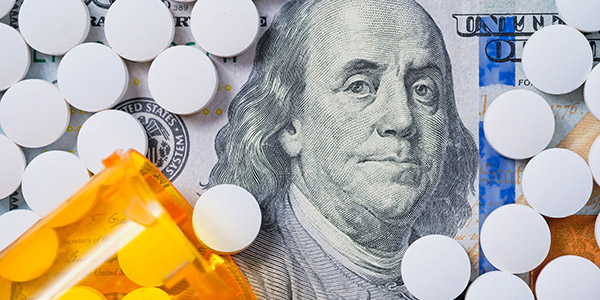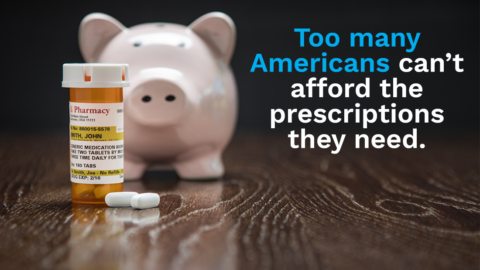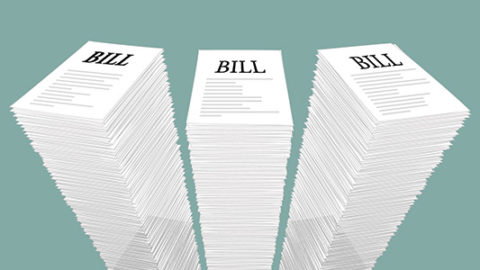What the Biden Administration’s Drug Pricing Reforms Mean for Employers

TOPLINES
The landmark drug-pricing reforms included in President Biden’s now-stalled Build Back Better initiative will likely reemerge later this year, either as stand-alone legislation or as part of a revised budget proposal, experts say.
Policy specialists taking part in a recent PBGH roundtable on drug costs noted the reforms continue to enjoy broad, bi-partisan support and will help address a top concern of the American people in an election year. Although employer advocates are disappointed the proposals don’t go further in helping non-government purchasers address drug costs, they agree the policies mark a significant first step.
“It changes the paradigm and equips the government with a whole new set of tools that can be altered over time to increase their reach and impact,” said roundtable participant Richard Frank, Ph.D., a senior fellow in economic studies at the Brookings Institution.
Added James Gelfand, executive vice president for public affairs with the ERISA Industry Committee: “This is the first time Congress has taken up policies that big pharma doesn’t like. Congress has its foot in the door now and is saying `we’re going to create a way of affecting drug prices.’”
Rebates for Excessive Price Hikes
The primary focus of the proposals is on reducing costs to the Medicare program. However, a key provision would require manufacturers to pay rebates if drug prices charged to both Medicare and private payers increase faster than the rate of inflation. The rebates would be paid to the Medicare trust fund and would total 100% of revenues earned from price hikes that exceed inflation.
The proposal targets virtually all drugs covered by Medicare Part D and single-source drugs and biologics covered by Part B. Observers believe the penalty will help reduce out-of-pocket spending for both commercial plan members and Medicare beneficiaries and also constrain premium increases.
Desiree Hoffman, assistant legislative director for the United Auto Workers, said escalating drug prices and the continually rising cost of employer-sponsored health insurance, are major concerns for America’s workers, both union and non-union.
“With waging declining over time, employees are really feeling the squeeze,” she said. “The high cost of employer-sponsored health care is an issue we frequently face at the bargaining table.”
Shawn Gremminger, PBGH’s director of health policy, said it will be essential in the months ahead for supporters to ensure the rebate is not watered down—either in the legislative or rule-making processes—and, critically, that it continues to apply to both government and private payer pricing.
In addition to the inflation rebate, privately insured people also will benefit from a provision requiring all insurers to limit patient cost-sharing for insulin products to no more than $35 per month. The move should lower costs for all insulin users. According to the Kaiser Family Foundation, average yearly out-of-pocket insulin spending for Medicare beneficiaries increased by 79% between 2007 and 2017, from $324 to $580.
Negotiating Medicare Drug Prices
Beyond the inflation rebate, among the legislation’s most significant reforms is a provision that would enable the Centers for Medicare and Medicaid Services (CMS) to begin negotiating prices for a limited number of high-cost drugs that lack generic or biosimilar competition.
Drugs targeted for negotiation would be selected from 50 with the highest total Medicare spending. The number of drugs impacted would gradually increase from 10 in 2025 to 20 in 2028. CMS has previously estimated that an earlier version of the negotiation proposal could reduce Medicare enrollee cost-sharing expenses by more than $102 billion by 2029.
Two other key provisions in the administration’s Build Back Better proposal include a $2,000 cap on out-of-pocket spending for Part D enrollees and a reduction in beneficiaries’ portion of total drug costs below the cap from 25% to 23%.
PBM Transparency Key to Reducing Employer Drug Costs Today
In lieu of new government policies that could bring down drug costs, roundtable participants offered suggestions on how employers can begin taking greater control of their prescription drug spending today.
Marianna Socal, M.D., an associate scientist at Johns Hopkins University, said central to reduced drug prices is greater transparency relating to the actions of the pharmacy benefit manager (PBM). As it stands now, she said, PBMs are often incentivized to cover more expensive drugs if they’re likely to receive a greater rebate from the manufacturer.
“We need solutions to disentangle these misaligned incentives, not only at the top when the price is set but also when we negotiate (through PBMs).”
Gelfand of the ERISA Industry Committee agreed, noting that employers often don’t know what prices they’re paying for drugs beyond a single, aggregate amount.
“If I’m paying $8 million for cancer drugs, I need to know if it was the same price each time the same drug was used,” he said. “Did the price differ when it was given in the hospital versus when it was filled by a retail pharmacy or a by a mail order pharmacy? It becomes very difficult to fix the problem if you can’t identify it.”
Waste-Free Formularies
He and others said it was essential for employers to more closely scrutinize their formularies to determine if they’re promoting biosimilars and other appropriate drug substitutions. Gelfand said PBGH’s efforts to assist purchasers in developing and implementing waste-free formularies can be enormously beneficial when it comes to rationalizing drug purchases and spending. According to Socal, purchasers can save 10-15% of total per-member-per-month costs by implementing waste-free formularies.
Frank of the Brooking Institution said employers must overcome their traditional reluctance to leveraging their bargaining power with PBMs and intervene more directly in both formulary design and PBM-manufacturer negotiations.
“On the face of it, PBMs and manufacturers dislike each other because each is constantly pushing for a better deal. But in the end, they’re both playing the same game,” Gremminger said. “So the challenge will be to shift PBM incentives so they align with the needs of the purchasers and workers.”



